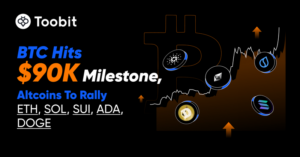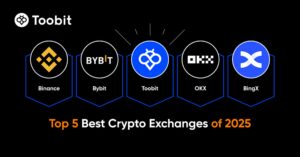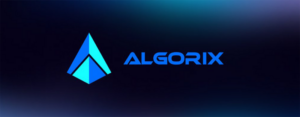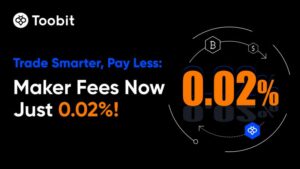When venturing into the world of cryptocurrencies, selecting the right exchange can significantly influence your trading success and overall experience. Among the many platforms available today, Toobit vs Binance stands out as a comparison that many traders are curious about. Both exchanges have carved unique niches in the crypto ecosystem, offering different features, fee structures, security protocols, and user experiences. This detailed guide aims to dissect every aspect of these two giants, helping you understand their strengths and weaknesses so you can make an informed decision.
In this comprehensive post, we will explore Toobit vs Binance across key parameters such as core features, trading fees, user interface, security measures, supported cryptocurrencies, customer support, liquidity, regulatory compliance, and more. Whether you’re a beginner or an experienced trader, our goal is to provide clarity and insights into each platform’s offerings, ensuring you choose the best fit for your trading journey.
Toobit vs Binance: A Comprehensive Comparison
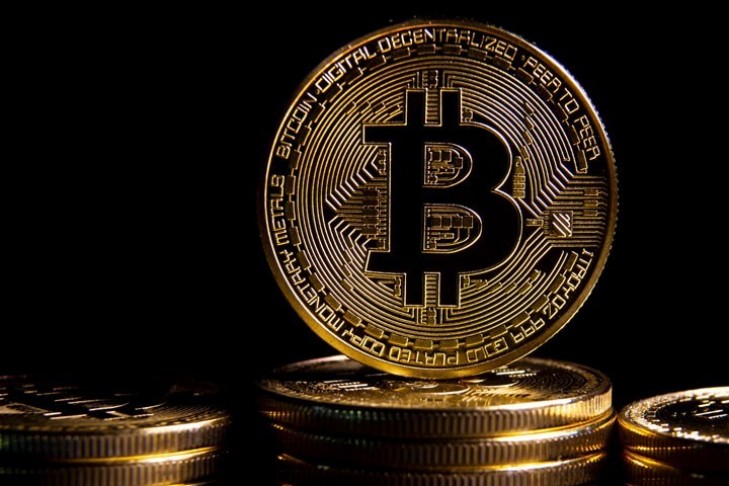
Choosing between Toobit and Binance requires a nuanced understanding of their respective functionalities, policies, and market positioning. Both platforms serve millions but cater to slightly different user needs, geographic regions, and trading styles. The first step in this comparison is establishing what makes each platform unique and how they align with your trading objectives.
This section introduces the core distinctions and sets the stage for deeper analysis. We will look at the history, target audience, and general market reputation of both exchanges, providing context for subsequent detailed evaluations.
Toobit, emerging as a competitive player in the crypto exchange landscape, offers a focus on user-friendly interfaces, a broad range of assets, and innovative features aimed at retail investors and institutional clients alike. Its recent growth has been driven by competitive fees and emphasis on security, making it appealing to users seeking reliability and efficiency.
Binance, on the other hand, is arguably the world’s largest and most influential cryptocurrency exchange, known for its extensive selection of cryptocurrencies, high liquidity, and innovative product offerings like futures, staking, savings, and decentralized finance (DeFi) integrations. Its vast user base spans across continents, giving it a dominant position in the global crypto space.
When comparing Toobit vs Binance, it’s essential to consider their market scope, technological infrastructure, legal standing, and community reputation. Each platform reflects different philosophies—Toobit’s focus on simplicity and safety versus Binance’s expansive ecosystem and advanced trading tools.
Key Features of Toobit vs Binance
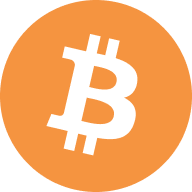
Understanding the core features of each platform will help you gauge which aligns better with your trading style and needs. Features such as user interface, advanced trading options, mobile accessibility, and additional financial products define the overall utility of the exchange.
User Interface and Accessibility
Toobit emphasizes a clean, intuitive interface designed for ease of use, especially for beginners. Its dashboard layout simplifies navigation, making it easier for new users to buy, sell, and manage assets without feeling overwhelmed. The platform likely incorporates guided tutorials or onboarding processes to assist newcomers, reflecting its commitment to user-friendliness.
Binance’s interface caters to a broader spectrum—from casual traders to professional investors. Its desktop platform offers customizable layouts, advanced charting tools, and quick execution features suitable for high-frequency trading. Moreover, Binance’s mobile app provides robust functionality, including real-time alerts, order management, and access to DeFi services, appealing to on-the-go traders.
Trading Options and Financial Products
Toobit primarily focuses on spot trading, supporting a wide variety of cryptocurrencies for buying and selling. It may also offer staking or savings options, but its emphasis remains on straightforward transactions. The platform’s trading engine is optimized for speed and efficiency in retail trading, with limited derivatives or margin trading options.
Binance distinguishes itself with an extensive suite of trading instruments. Beyond spot trading, it offers futures, options, leveraged tokens, and even tokenized assets. Binance Labs and its launchpad facilitate startup investments, and the platform supports staking, lending, and savings programs. For advanced traders, Binance provides sophisticated tools such as futures hedging, algorithmic trading APIs, and margin trading with leverage up to 125x in certain markets.
Additional Features and Ecosystem Integration
Toobit might integrate basic features like price alerts, transaction history, and account security settings. Its ecosystem is designed to be simple yet reliable, prioritizing core trading functions over ancillary services.
Binance hosts a vibrant ecosystem that extends beyond trading. It includes Binance Smart Chain (BSC) for DeFi projects, NFT marketplace, educational resources, and a dedicated research arm. Its Binance Card enables fiat-crypto conversions for everyday spending, while its Launchpad supports blockchain startups.
In sum, Toobit vs Binance reveals that while Toobit is tailored toward ease of use and straightforward trading, Binance offers a multifaceted platform catering to varied trading strategies and financial innovation.
Trading Fees: Toobit vs Binance Explained

Trading fees significantly impact profitability, especially for active traders. Lower fees can mean substantial savings over time, while complex fee structures may accommodate different trading volumes and asset classes.
Fee Structures Overview
Toobit generally adopts a competitive fee system aimed at attracting retail traders. Its fee model might factor in trading volume, with tiered discounts rewarding higher-volume traders. The platform possibly charges a flat percentage fee per trade or uses a maker-taker model, where maker orders (limit orders) pay less than taker orders (market orders).
Binance employs one of the most elaborate and competitive fee structures globally. It operates on a tiered fee schedule based on 30-day trading volume and BNB (Binance Coin) holdings. Traders with larger volumes or who hold Binance Coin benefit from lower fees, sometimes as low as 0.02% for makers and 0.04% for takers. Additionally, Binance often offers fee rebates for using BNB to pay trading fees, further incentivizing native token usage.
Fee Transparency and Ease of Understanding
Toobit strives for transparency, clearly outlining fee tiers and possible discounts for VIP or institutional traders. Its fee disclosures are straightforward, enabling traders to anticipate costs precisely before executing orders.
Binance, despite its complex structure, maintains transparent fee information through detailed tables and calculators. Advanced traders appreciate the ability to optimize costs via BNB holdings or trading volume increases, but newcomers might find the fee schedule somewhat intricate initially.
Deposit and Withdrawal Fees
Deposit fees are typically minimal or zero on both platforms for major cryptocurrencies, promoting easy onboarding. Withdrawal fees vary depending on the coin, network congestion, and platform policies.
Toobit might charge modest withdrawal fees, aligned with network costs, and could have minimum thresholds for withdrawals to prevent small, costly transactions.
Binance adjusts withdrawal fees dynamically based on blockchain conditions. Its large-scale operations enable it to negotiate lower network costs, often passing these savings to users.
Fee Impact on Trading Strategies
Active traders prioritize fee minimization strategies, such as employing maker orders or holding BNB on Binance. For casual traders, fee differences may be negligible compared to other factors like security or features.
Overall, Toobit vs Binance in trading fees exemplifies the trade-off between simplicity and complexity—where Binance offers highly optimized rates for high-volume traders but may require a learning curve to fully utilize.
User Experience on Toobit vs Binance
User experience determines how comfortably traders can execute strategies, navigate platforms, and access customer support when needed. A seamless interface fosters confidence and encourages continued engagement.
Ease of Navigation and Design
Toobit prioritizes simplicity. Its user interface is minimalistic, designed to reduce cognitive load and streamline common tasks like purchasing, selling, and viewing portfolios. Clear icons, concise menus, and straightforward workflows make it accessible for beginners who may be intimidated by complex trading environments.
Binance offers a feature-rich environment, which can sometimes be overwhelming for new users. Its design caters to power users with advanced charting, multiple order types, and diversified product sections. However, Binance’s interface has evolved over years, incorporating user feedback to improve usability, with separate modes for basic, advanced, and pro views.
Onboarding and Educational Resources
Toobit potentially excels in onboarding new users with guided tutorials, FAQs, and easy registration processes. Its focus on user education reduces entry barriers, making it ideal for novices.
Binance offers extensive educational content, including webinars, articles, and a dedicated academy. Its onboarding process involves identity verification and security checks but provides ample resources to familiarize users with platform features and risk management.
Mobile App Experience
Toobit’s mobile application likely mirrors its web platform’s simplicity, allowing swift trades and account management on smartphones. The app’s responsiveness and stability are critical for user retention.
Binance’s app is among the most downloaded in the crypto space, packed with features such as spot and futures trading, staking, and NFT browsing. It supports biometric login, real-time notifications, and multi-language support, enhancing user engagement globally.
Customer Feedback and Satisfaction
Feedback indicates that Toobit’s user experience is appreciated for its straightforwardness, although some users might desire more advanced trading tools as they grow.
Binance enjoys widespread praise for its feature set but occasionally faces criticism related to customer support delays or platform outages during high volatility periods. Nevertheless, its user base shows a high level of satisfaction regarding the platform’s versatility.
In conclusion, Toobit vs Binance in user experience showcases contrasting approaches—simplicity versus sophistication—but both strive to provide intuitive, reliable platforms suited to their target audiences.
Security Measures: Toobit vs Binance
Security remains paramount in crypto trading, where thefts, hacks, and scams pose constant threats. Evaluating security protocols helps ensure your assets are protected.
Security Protocols and Practices
Toobit likely implements industry-standard security measures such as two-factor authentication (2FA), cold storage of funds, and regular security audits. Its emphasis on user data protection and transparency about security practices builds trust.
Binance has implemented comprehensive security frameworks including SAFU (Secure Asset Fund for Users), multi-tiered cold/hot wallet segregation, biometric verification, and regular third-party security assessments. Despite its scale making it a bigger target, Binance’s proactive security measures demonstrate industry leadership.
Response to Security Incidents and User Trust
Toobit’s reputation depends heavily on consistent security performance. If it maintains transparency about incident handling and promptly resolves issues, users feel more confident.
Binance faced notable security challenges in the past, notably a major hack in 2019 resulting in the loss of approximately $40 million worth of Bitcoin. However, Binance’s swift response, reimbursement policy, and ongoing security upgrades helped restore user trust.
Insurance and Asset Protection
Toobit may not have specific insurance policies but relies on best practices like cold storage and secure custody solutions.
Binance established the SAFU fund as an emergency insurance pool designed to cover losses from hacking incidents. This initiative demonstrates Binance’s commitment to safeguarding user assets, although no system is foolproof.
Regulatory Compliance and Data Security
Both platforms are increasingly aligning with regional regulations such as AML/KYC requirements, with Binance facing compliance challenges in some jurisdictions. Proper compliance adds another layer of security by preventing illicit activities.
In essence, Toobit vs Binance highlights that robust security practices involve layered defenses, rapid incident response, and transparent communication—all vital for maintaining user confidence in the volatile crypto environment.
Supported Cryptocurrencies: Toobit vs Binance
The range of supported cryptocurrencies influences trading flexibility and investment opportunities. More assets mean greater diversification potential and access to emerging projects.
Range of Coins and Tokens
Toobit offers a curated selection of cryptocurrencies—probably focusing on major coins like Bitcoin, Ethereum, and popular altcoins. Its list might be expanding but remains comparatively moderate to maintain liquidity and security.
Binance boasts one of the widest selections of digital assets worldwide, with thousands of tokens listed across various categories, including new launches, stablecoins, DeFi tokens, and NFTs. Its rigorous listing criteria ensure quality but still promote diverse options.
Listing Process and Quality Assurance
Toobit likely employs criteria emphasizing security, liquidity, and project credibility before listing new coins, aiming to protect users from scams or pump-and-dump schemes.
Binance has a structured listing process involving community votes, project evaluations, and due diligence. Its high standards help maintain platform integrity amid a flood of new tokens.
Support for DeFi and Emerging Projects
Toobit may support select DeFi tokens or launchpad projects but probably does not emphasize DeFi integration as a core feature.
Binance actively promotes DeFi projects, launching tokens, and integrating decentralized finance functionalities directly into its ecosystem. This attracts traders interested in yield farming, staking, and token swaps.
Fiat Currency Support and International Availability
Toobit probably supports fewer fiat options, focusing on regions with rising crypto adoption.
Binance offers numerous fiat gateways, including bank transfers, credit cards, and local payment methods across multiple countries. Its broad international presence makes it accessible to a diverse user base.
In summary, Toobit vs Binance illustrate contrasting approaches—where Toobit focuses on quality and curated offerings, Binance prioritizes breadth and access to emerging projects.
Customer Support Analysis: Toobit vs Binance
Reliable customer support is crucial, especially in a fast-paced, high-stakes environment like crypto trading. Effective assistance can mitigate losses and improve user satisfaction.
Support Channels and Responsiveness
Toobit may offer support via email, live chat, and comprehensive FAQs. Its focus on simplicity might translate into quicker resolutions for common issues, especially for novice users.
Binance provides multiple channels including live chat, email, social media, and an extensive help center. While its large user base can strain support resources, Binance invests heavily in staffing and AI-driven solutions to improve response times.
Quality of Assistance and User Feedback
Toobit’s smaller scale may allow for more personalized service, with dedicated account managers or prompt responses. Users might appreciate direct communication and faster issue resolution.
Binance’s support quality varies according to reports—some users report delays during peak periods but acknowledge continuous improvements and a wealth of self-help resources.
Dispute Resolution and Account Security Support
Both platforms claim to implement strict identity verification and dispute resolution procedures. Binance’s ongoing efforts include dedicated security teams to handle account recovery and fraud prevention.
Toobit might focus on transparent, user-centric policies to build trust, though its support infrastructure may still be developing compared to Binance’s extensive operations.
In conclusion, Toobit vs Binance in customer support underscores the importance of accessible, responsive, and effective service to ensure smooth trading experiences and foster long-term user loyalty.
Liquidity and Trading Volume: Toobit vs Binance
Liquidity is vital for executing large orders without significant slippage, and high trading volume signals a healthy, active market.
Market Depth and Order Book Analysis
Binance, as the largest exchange globally, exhibits exceptional liquidity across most trading pairs. Its deep order books enable traders to execute large transactions smoothly, minimizing price impact.
Toobit may have comparatively lower liquidity levels, especially for less popular cryptocurrencies. While sufficient for retail-sized trades, institutional or large-volume traders might face slippage issues.
Trading Volume Metrics
Binance consistently ranks at the top in trading volume charts, often exceeding billions of dollars daily. This high volume ensures tight spreads and instant order fills, making it attractive for day traders and arbitrageurs.
Toobit’s trading volume is growing but remains modest in comparison. Its volume is likely concentrated in select assets, serving niche markets or regional users.
Impact on Trading Strategies
High liquidity facilitates advanced strategies like high-frequency trading and arbitrage. Lower liquidity platforms tend to attract casual traders or those focused on specific coins, accepting longer execution times or wider spreads.
Market Stability and Price Discovery
Binance’s massive liquidity contributes to more stable prices and efficient price discovery, reducing the likelihood of manipulative practices. Conversely, Toobit might experience more volatility, especially for thinly traded pairs.
In sum, the Toobit vs Binance comparison emphasizes that liquidity and volume are crucial metrics—while Binance leads in these areas, Toobit focuses on regional or niche markets with potentially less liquidity but targeted offerings.
Regulatory Compliance: Toobit vs Binance
As governments worldwide tighten cryptocurrency regulations, compliance becomes a linchpin for sustained operation and user trust.
KYC/AML Policies
Toobit likely adheres to basic KYC (Know Your Customer) and AML (Anti-Money Laundering) standards, requiring identity verification for withdrawals or certain functionalities, aligning with regional legal requirements.
Binance has revamped its KYC procedures across jurisdictions, implementing stricter verification for higher-tier accounts and complying with local laws in regions like Europe, Asia, and North America.
Legal Challenges and Operating Licenses
Toobit’s legal standing depends largely on its country of operation. It may operate under licenses obtained in specific jurisdictions or adopt a regional approach to regulation.
Binance has faced scrutiny and regulatory actions in multiple countries, such as the UK, Japan, and Canada. Efforts include establishing subsidiaries with local licenses, adjusting product offerings, and enhancing transparency.
Future Outlook and Regulatory Trends
Toobit must stay attuned to evolving legal landscapes, especially if expanding internationally, to avoid shutdowns or penalties.
Binance actively participates in shaping industry standards and works with regulators to ensure compliance, though challenges remain due to its expansive scope.
In conclusion, Toobit vs Binance in regulatory compliance underscores the importance of operating within legal frameworks, which affects platform longevity, user protection, and global acceptance.
Final Verdict: Choosing Between Toobit and Binance
Deciding whether Toobit vs Binance is the right platform boils down to individual needs, trading goals, and risk appetite. Toobit offers a straightforward, user-friendly environment with strong security and curated asset offerings suited for beginners and regional traders. Its simplicity fosters ease of use, but its limited product range and liquidity may challenge more advanced traders.
Binance, by contrast, excels in variety, liquidity, and innovative features, making it ideal for experienced traders seeking diversified financial instruments and global reach. However, its complexity and past regulatory hurdles may intimidate newcomers or cautious investors.
Both platforms have their merits—Toobit stands out for its focus on safety and simplicity, while Binance leads with market depth, innovation, and ecosystem integration. Ultimately, your choice should reflect your trading experience, asset preferences, and long-term goals.
Conclusion
In the comparative landscape of Toobit vs Binance, it is evident that each platform caters to distinct segments of the crypto community. Toobit’s emphasis on user-friendly design, security, and regional accessibility makes it an excellent choice for newcomers or those prioritizing safety over extensive features. Meanwhile, Binance’s expansive ecosystem, high liquidity, and diverse trading options appeal to seasoned traders and institutional investors willing to navigate a more complex environment for greater opportunities. Carefully assessing your personal requirements against these platform attributes will guide you toward the best choice, ensuring a smoother, more secure, and profitable crypto trading experience.

